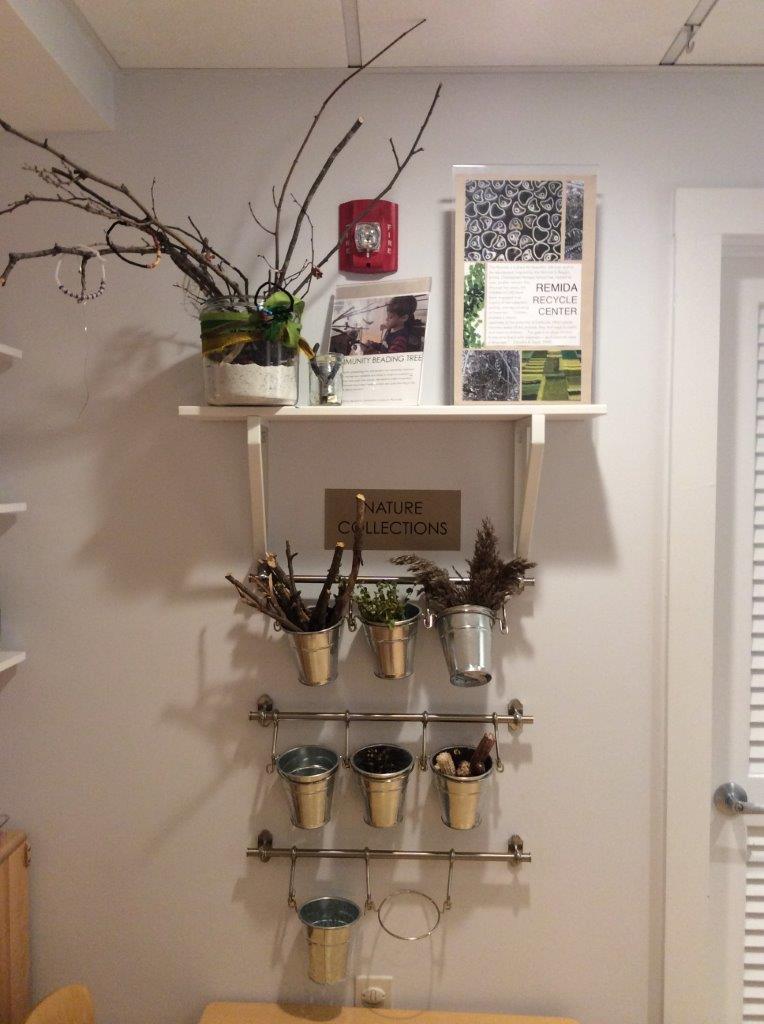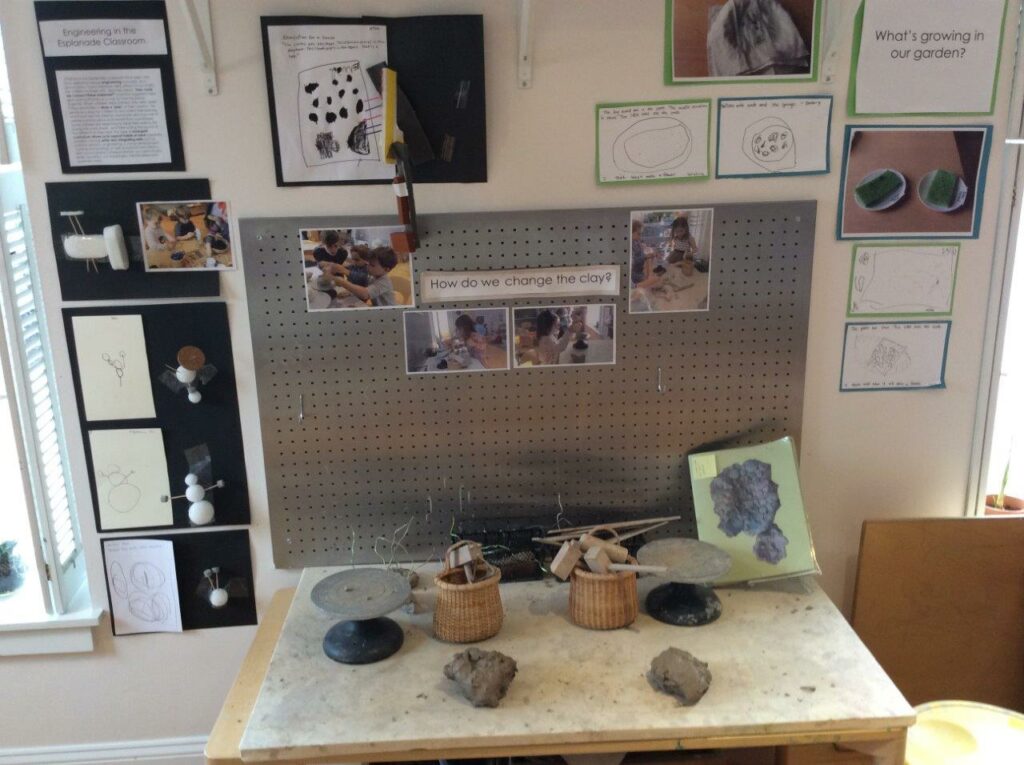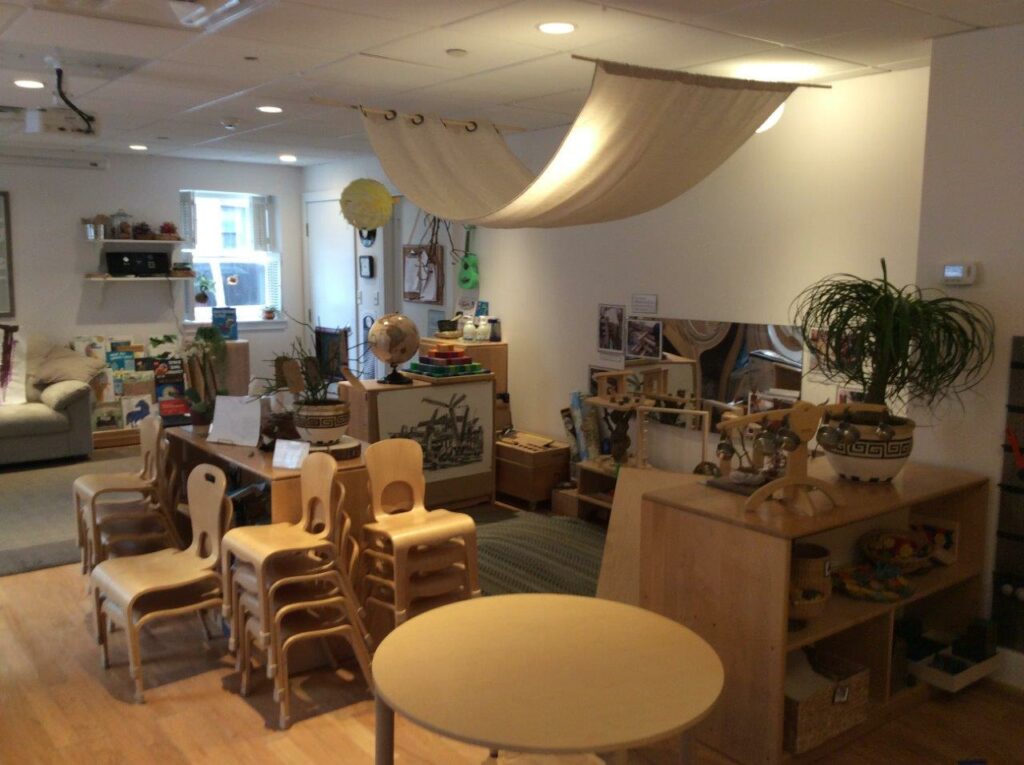Classroom environments have an impact on how children feel and respond and this in turn impacts learning. Aesthetics are the visual aspects of spaces and the objects in them. A traditional early childhood classroom can be a visually noisy, overly decorated, brightly colored, often cluttered space. Children are actually appreciative and thrive in a simpler, organized classroom that reflects themselves and the community they live in. Design choices impact the tone of your classroom and a great place to start is with walls and floors.
Walls and Floors
Walls
Cluttered walls create visual noise that can overwhelm children (and adults). Walls often end up as layered “vertical storage” with images, posters, charts added to throughout the year. Bulletin boards, each with a different color paper background and different scalloped borders, add to the visual confusion. Consider using one color of butcher paper or none at all, and make the borders one color, or none at all letting the children’s work speak for itself. If displays are carefully selected and serve a purpose, such as a mural of the neighborhood that has ongoing relevance, keeping it up all year makes sense. Intentionally choosing meaningful items, in an uncluttered way, provides “visual rest” for the eyes and the mind and reduces sensory overload. Displays that serve a purpose, such as a mural of the neighborhood that has ongoing relevance, make sense to keep up all year, while other images and artifacts may rotate.


Floors
Rugs provide soft spaces for children to gather and add warmth and coziness to the environment. Overly decorated rugs add unnecessary images that interfere with children’s focus, especially when they are working on the floor. A child working with multi-colored cubes on a multi-colored rug, trying to sort them by color may experience extra effort and visual overload. Choose solid color rugs in your meeting, block, and library areas to simplify classroom design and make it easier for children to focus on the materials they use on the floor. Solid color work mats on busy rugs are a solution to visual ease without having to replace an entire rug.
